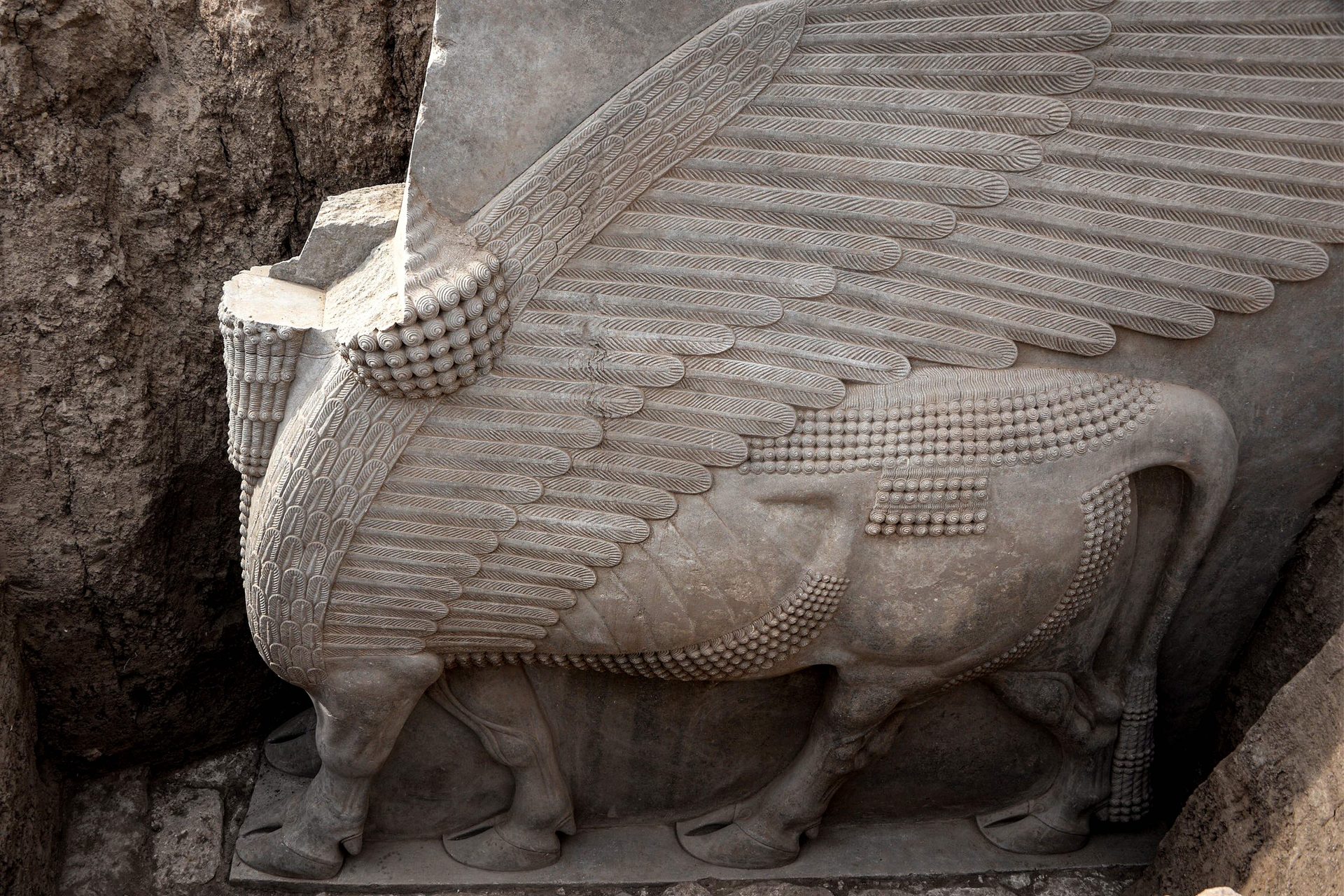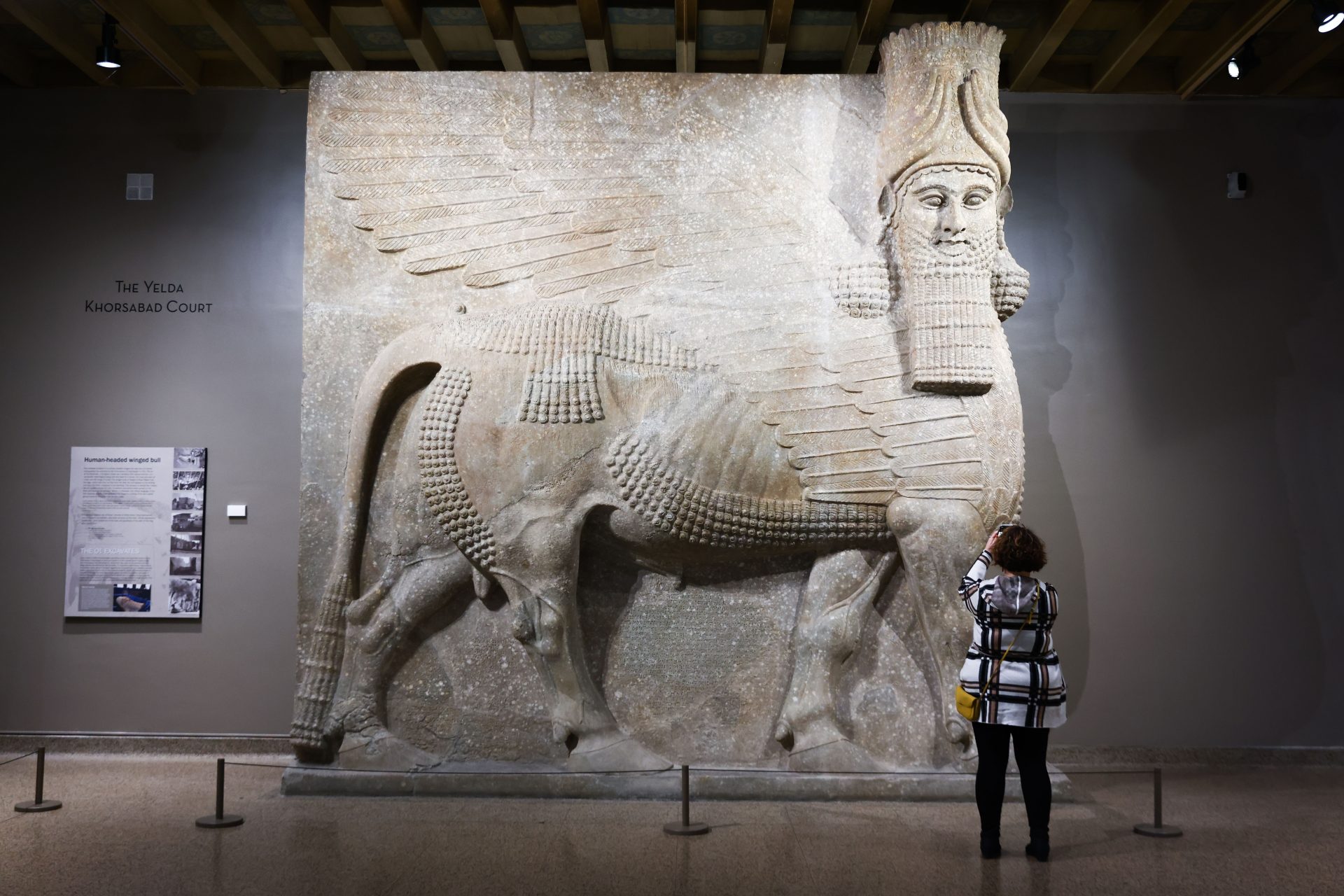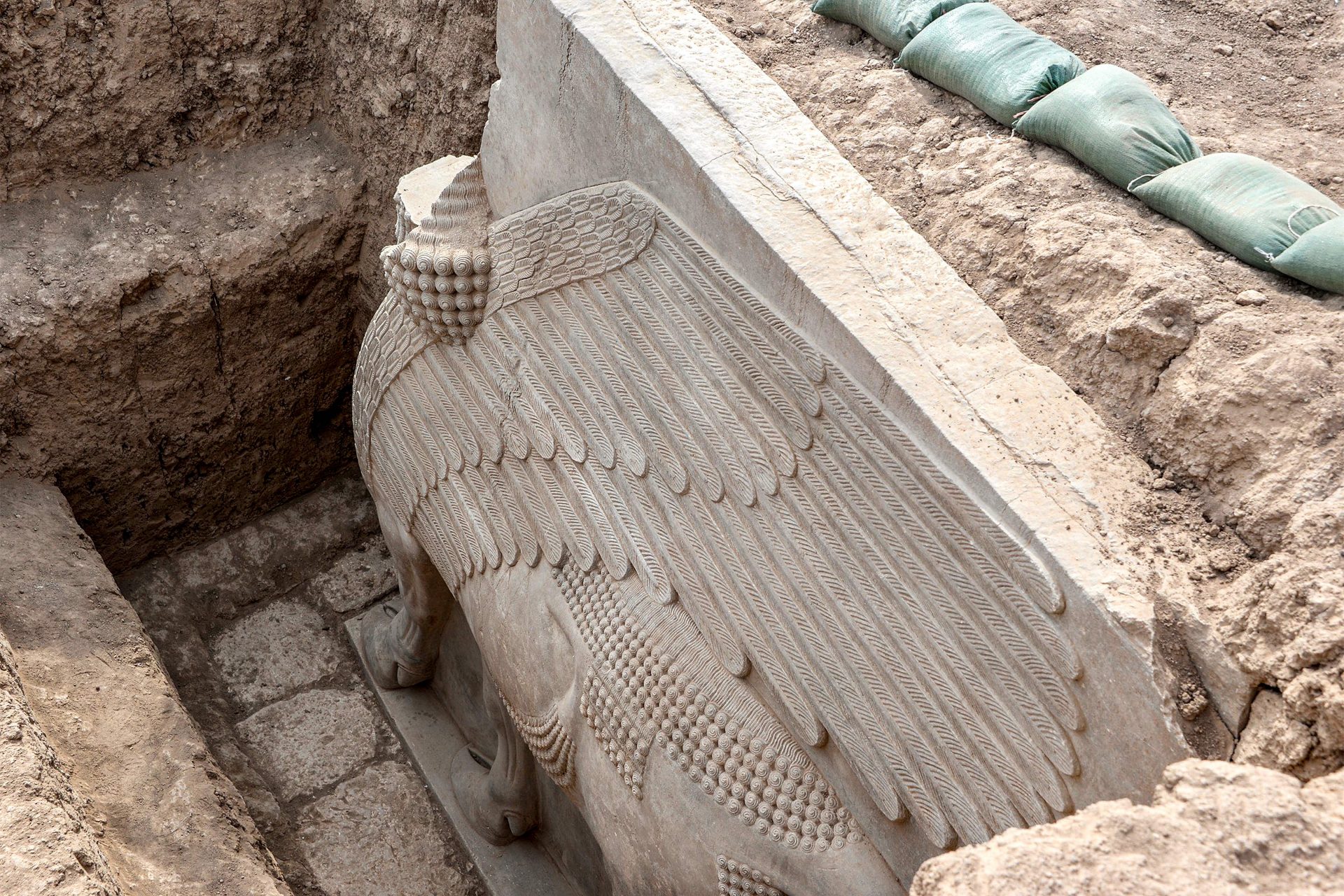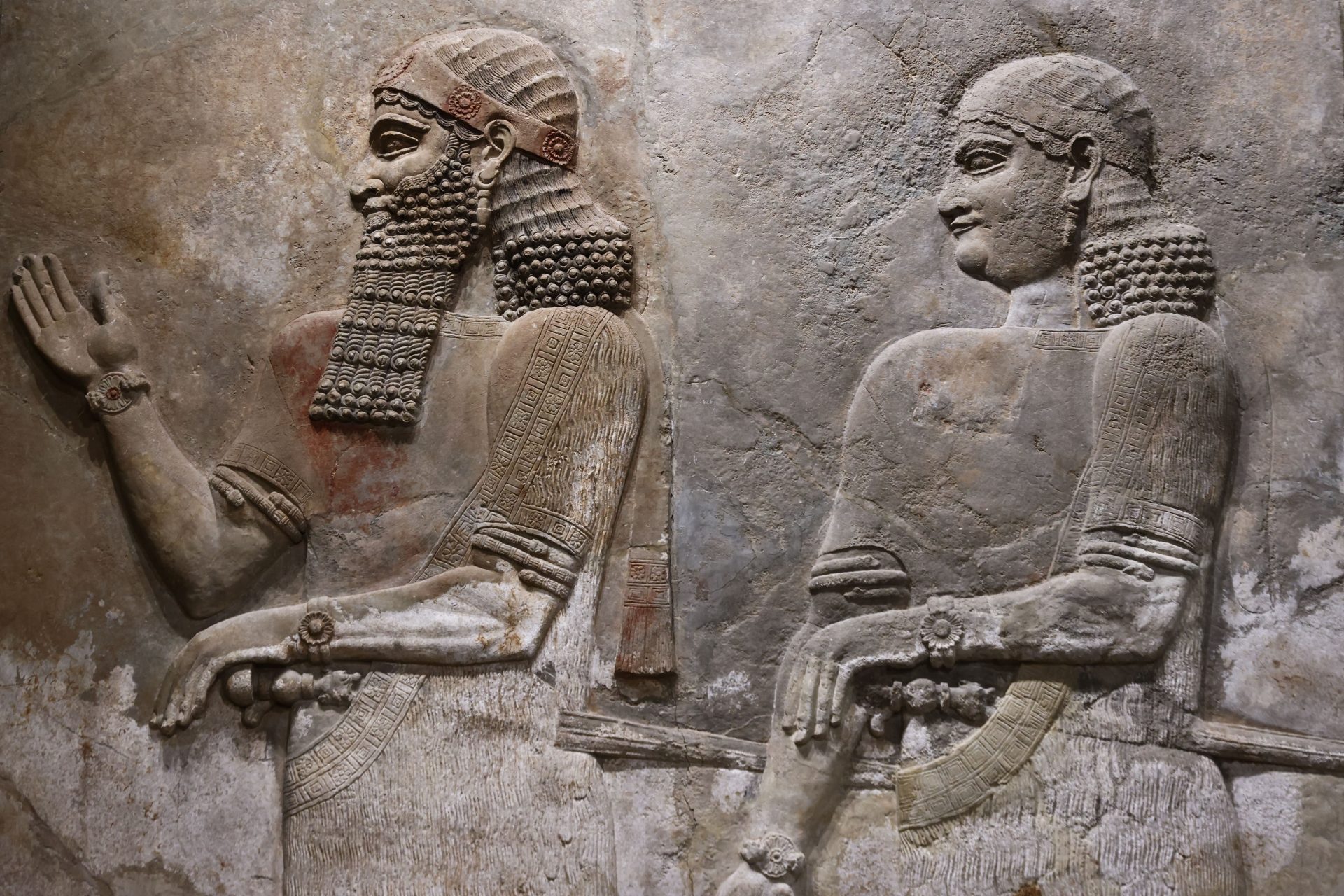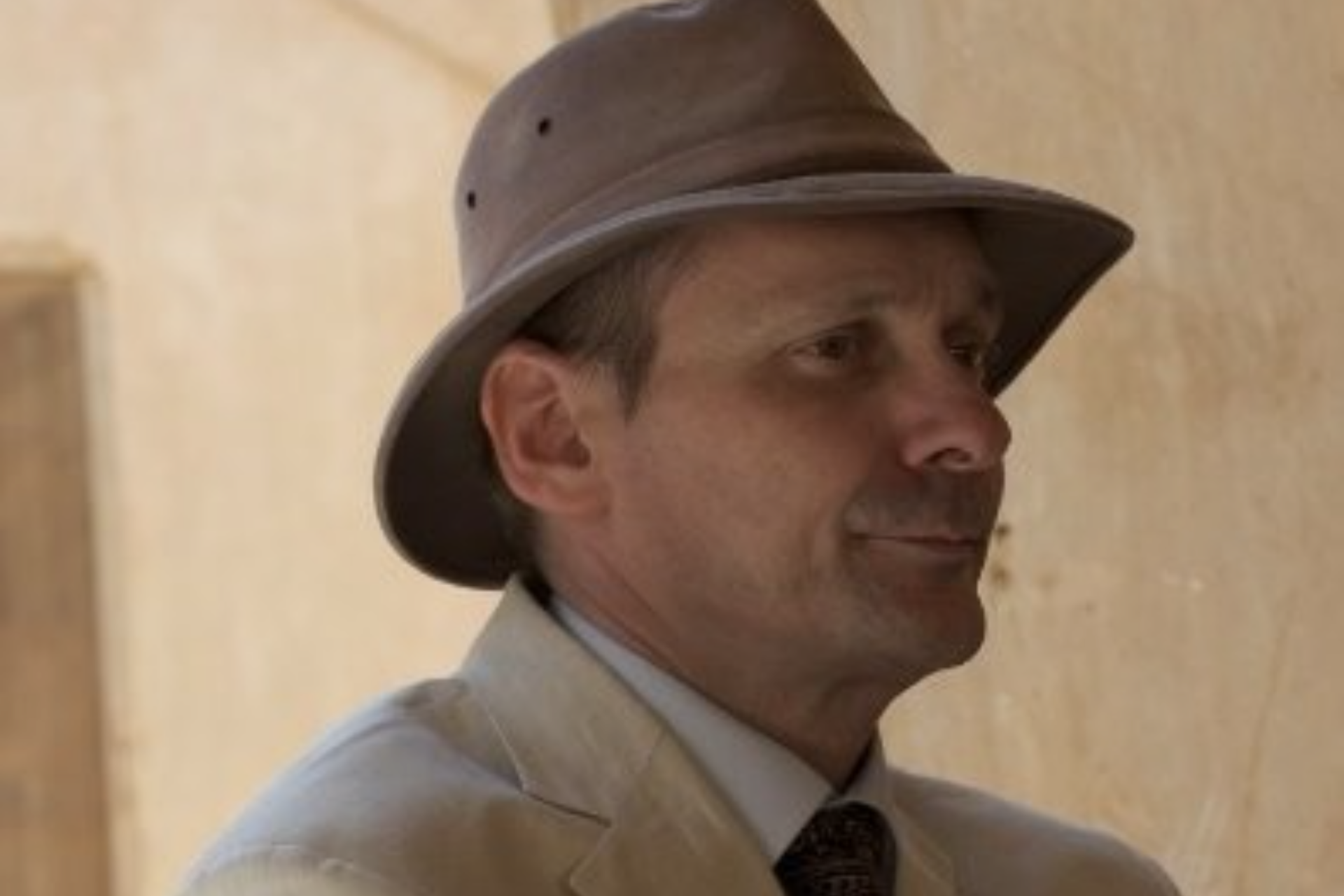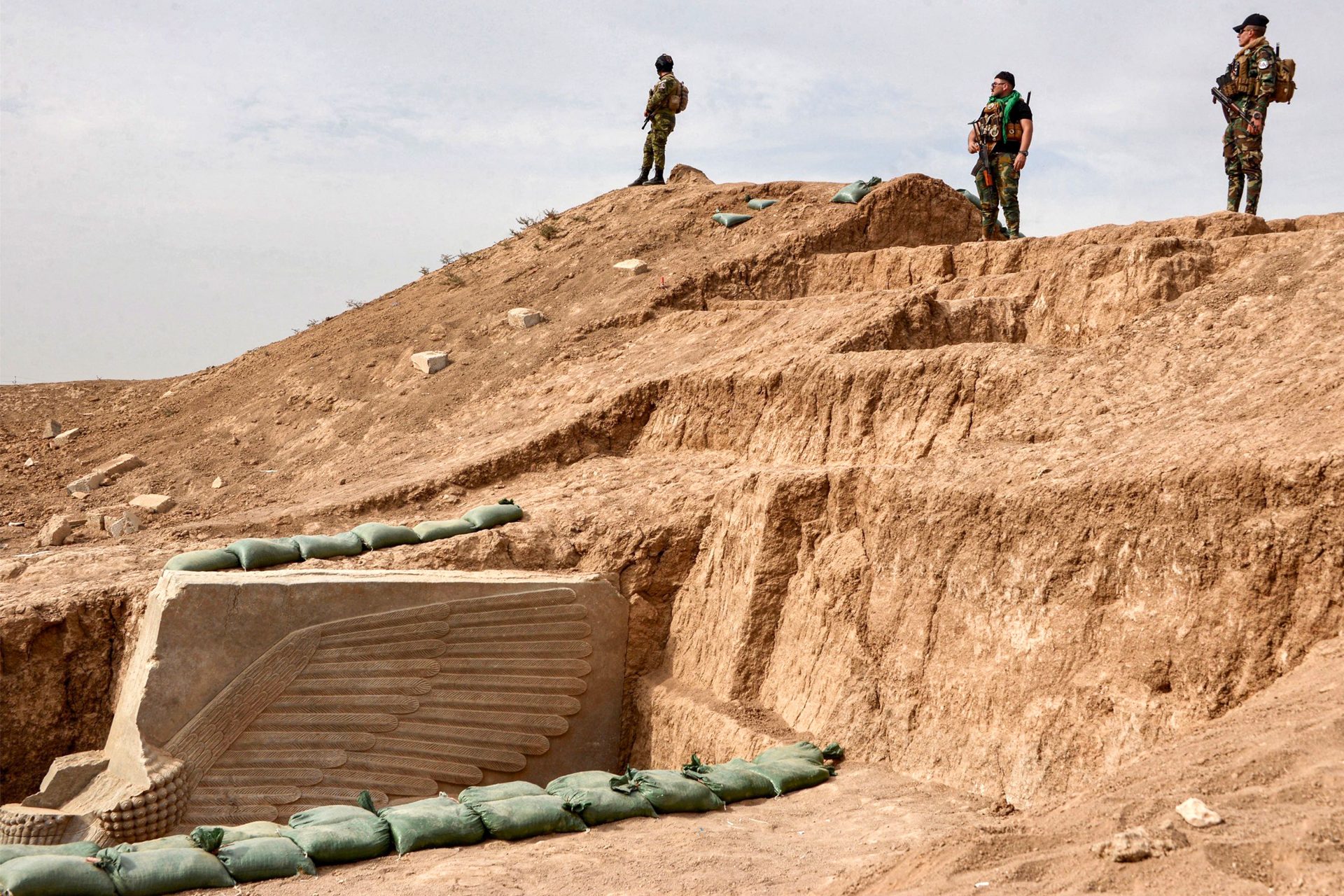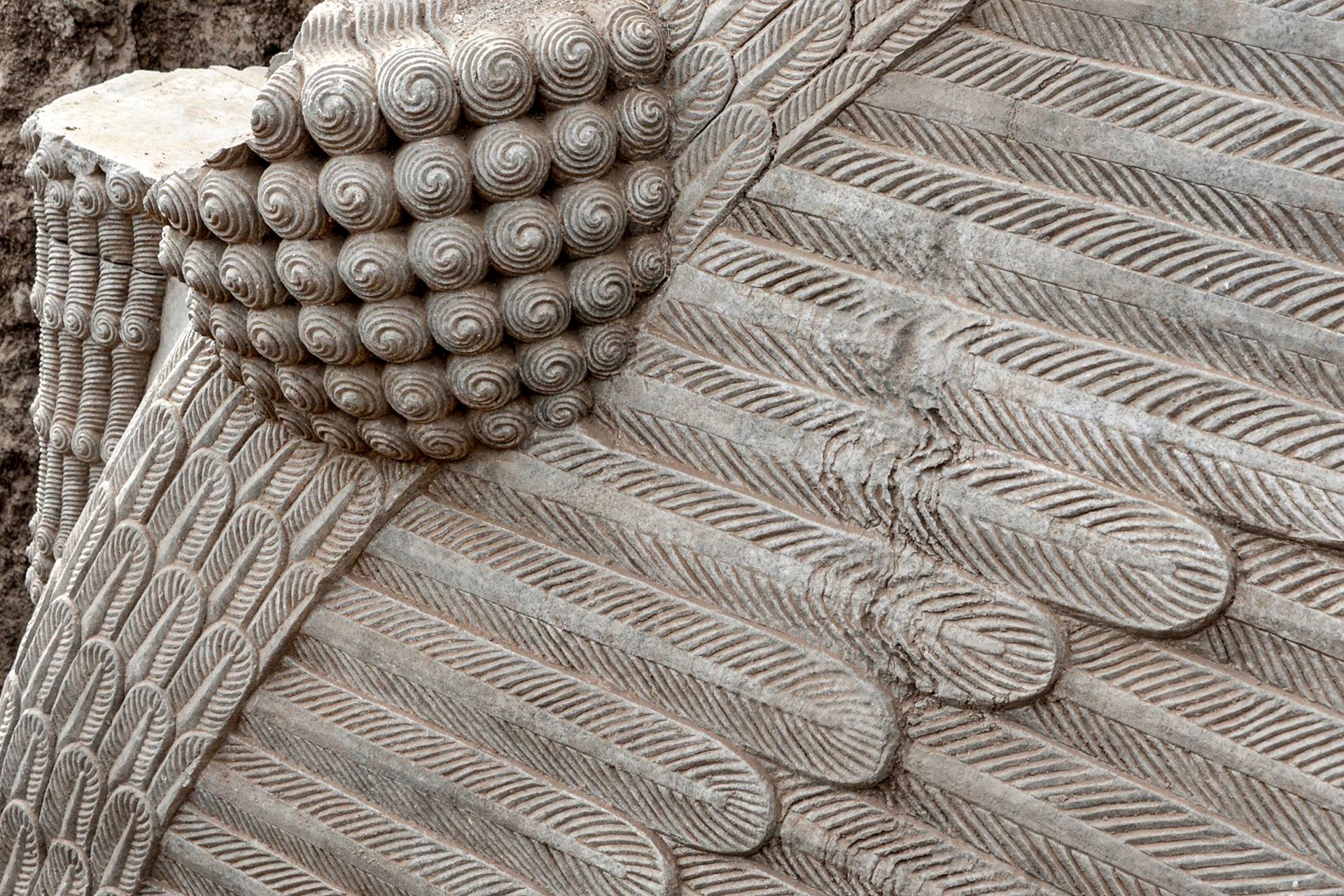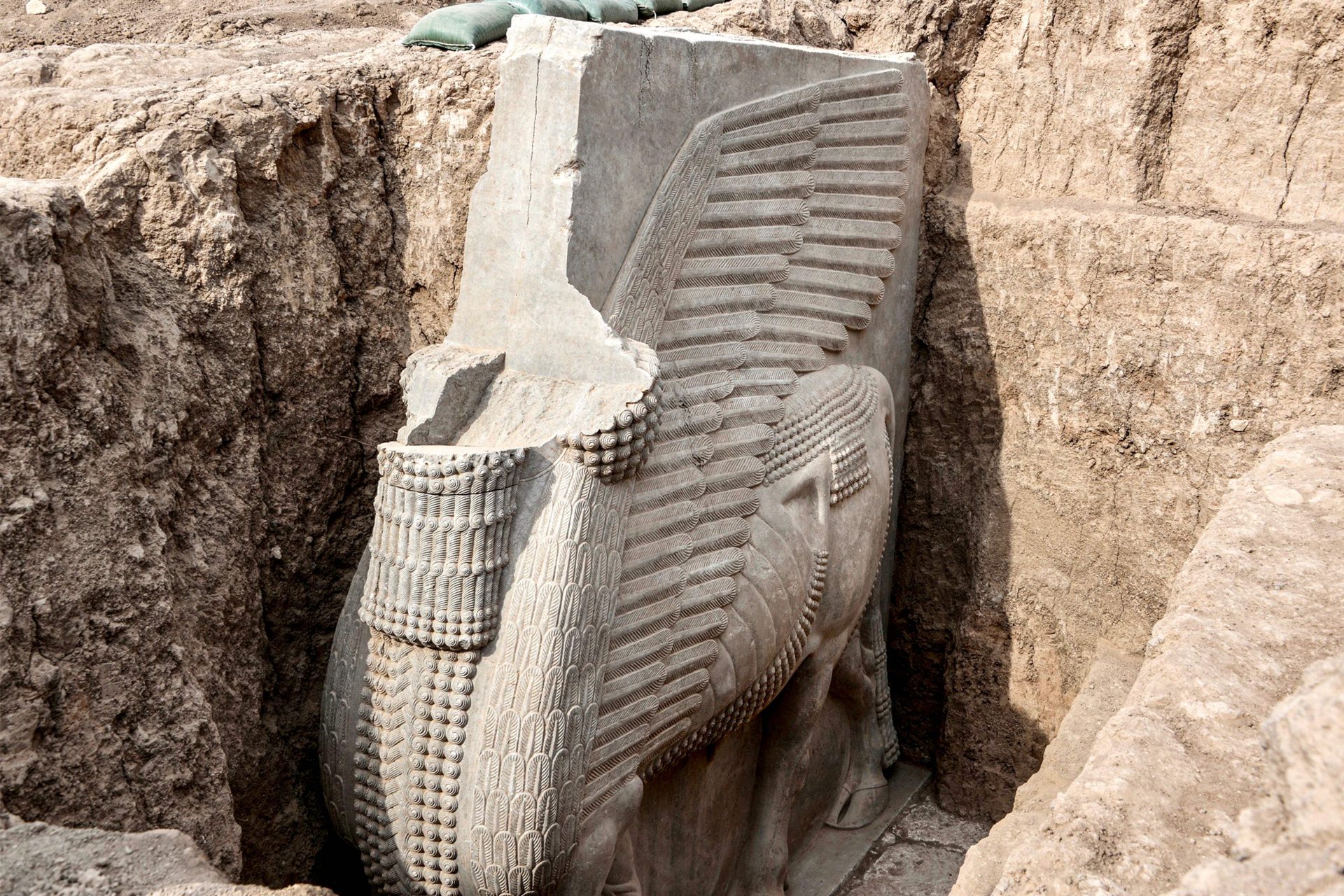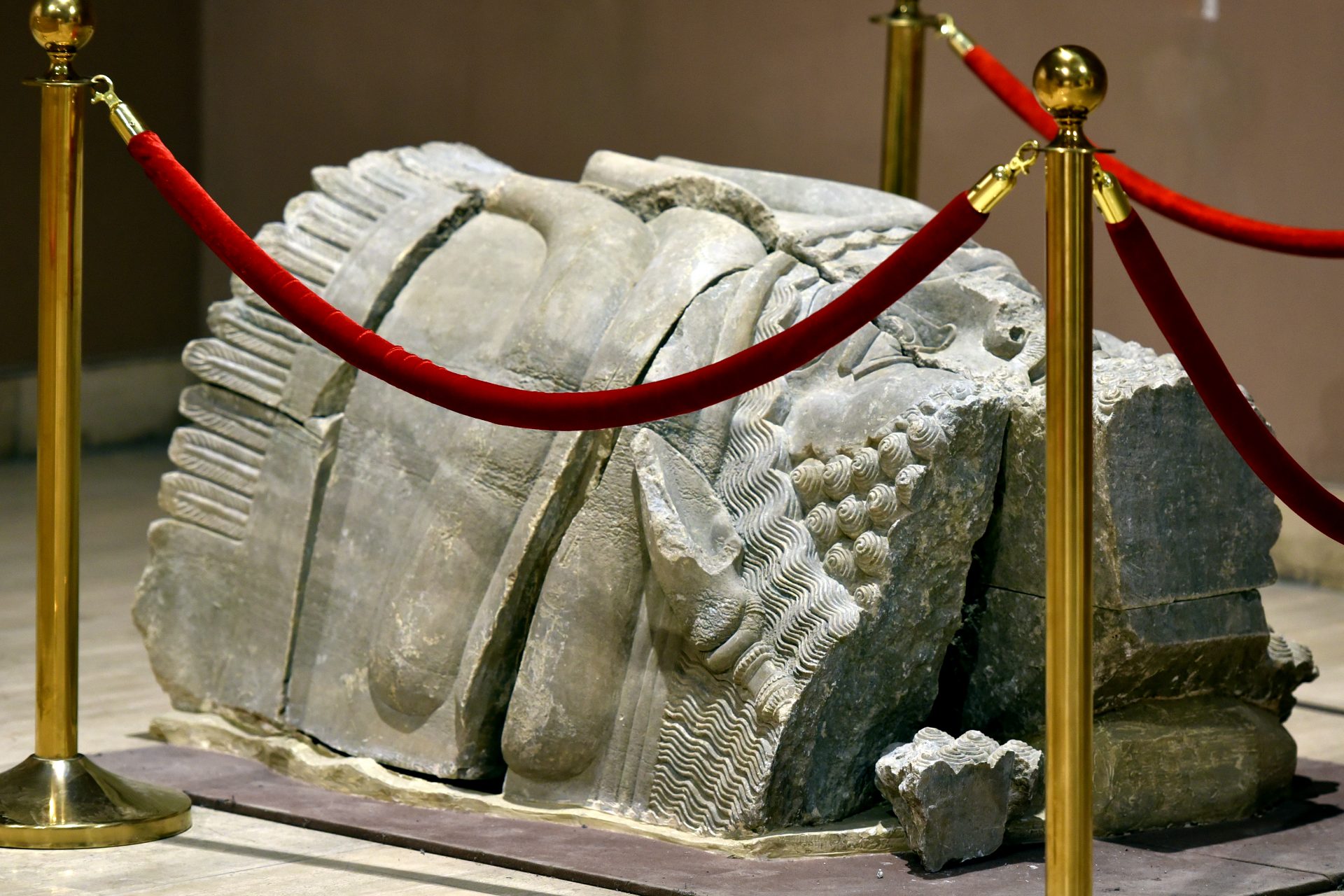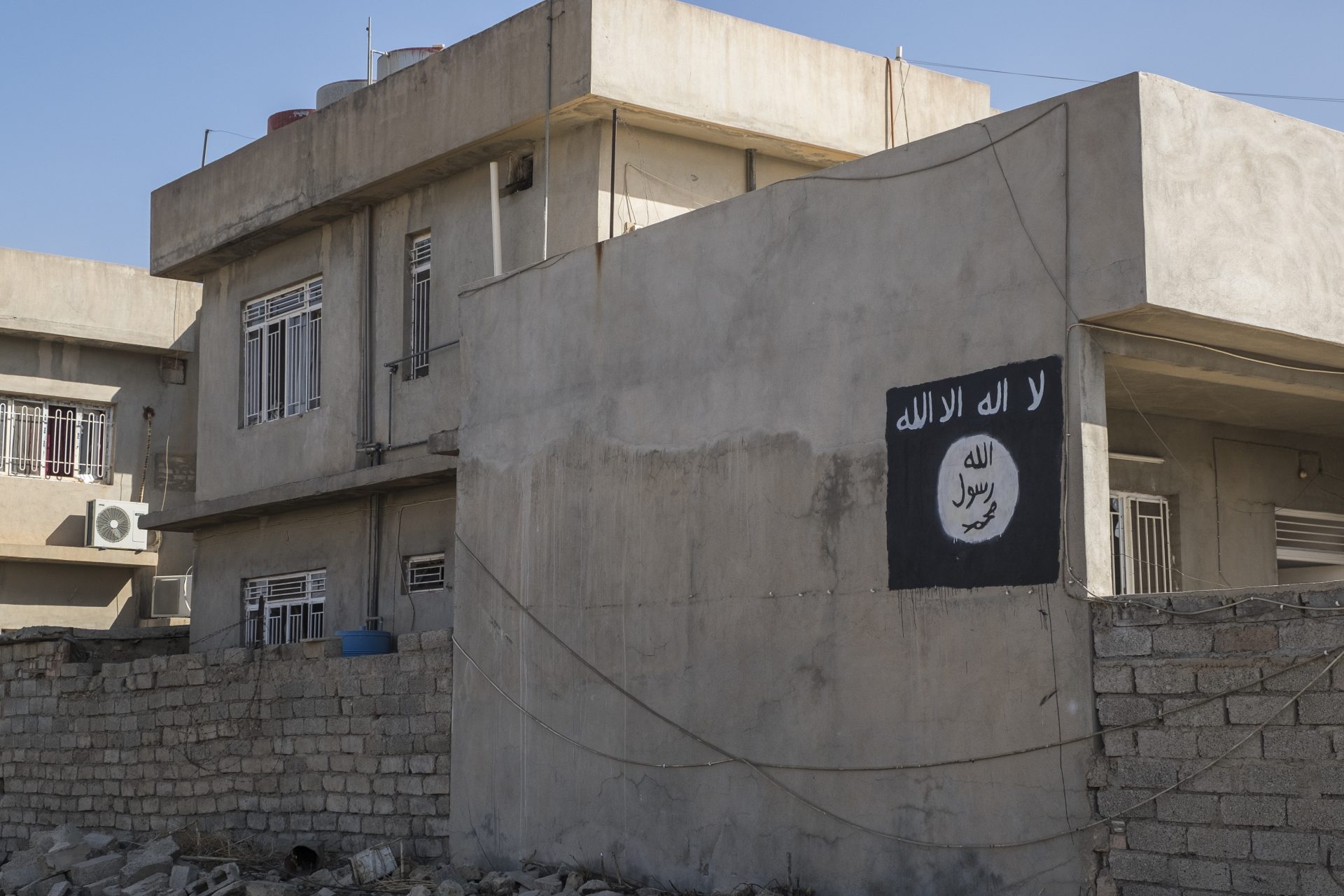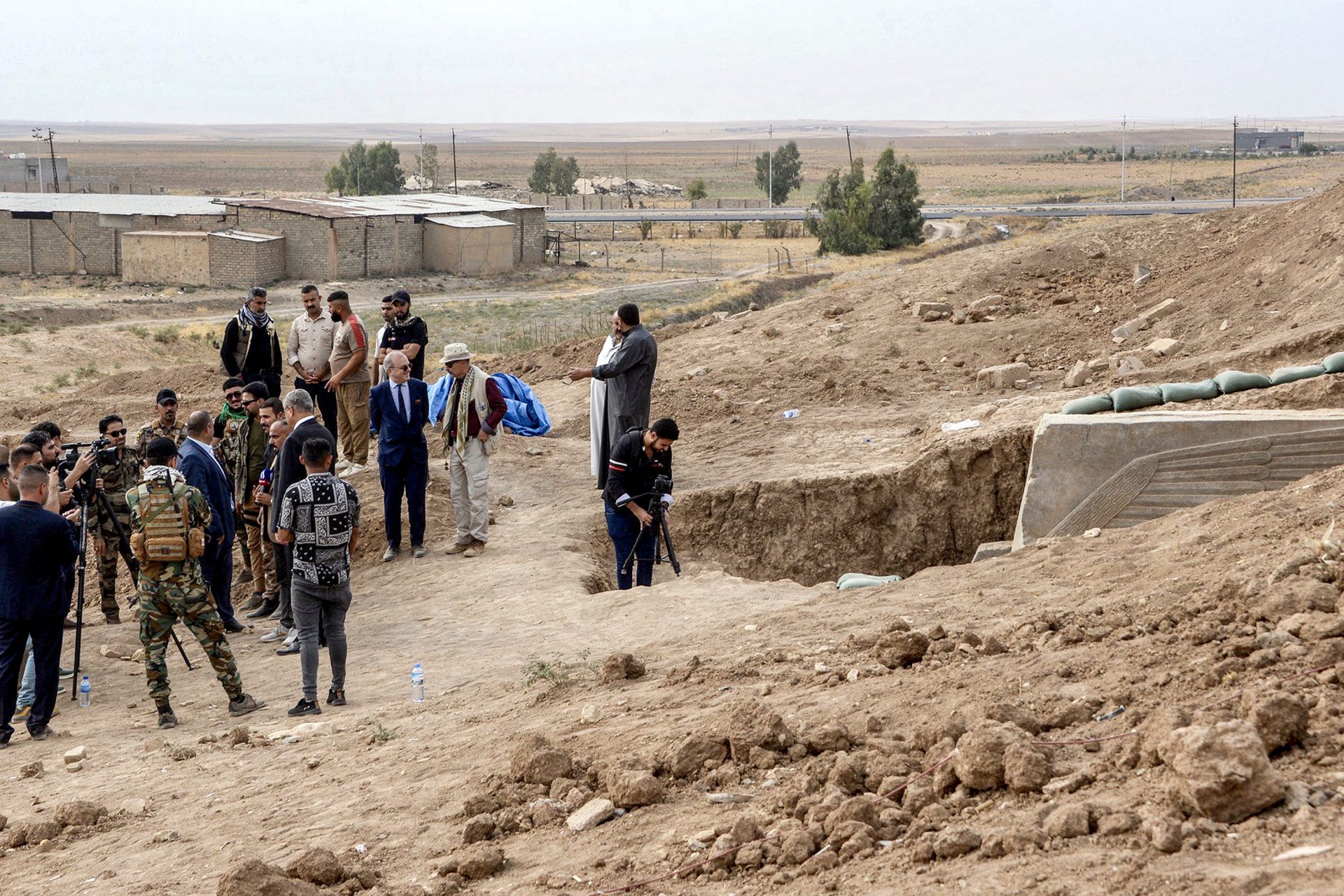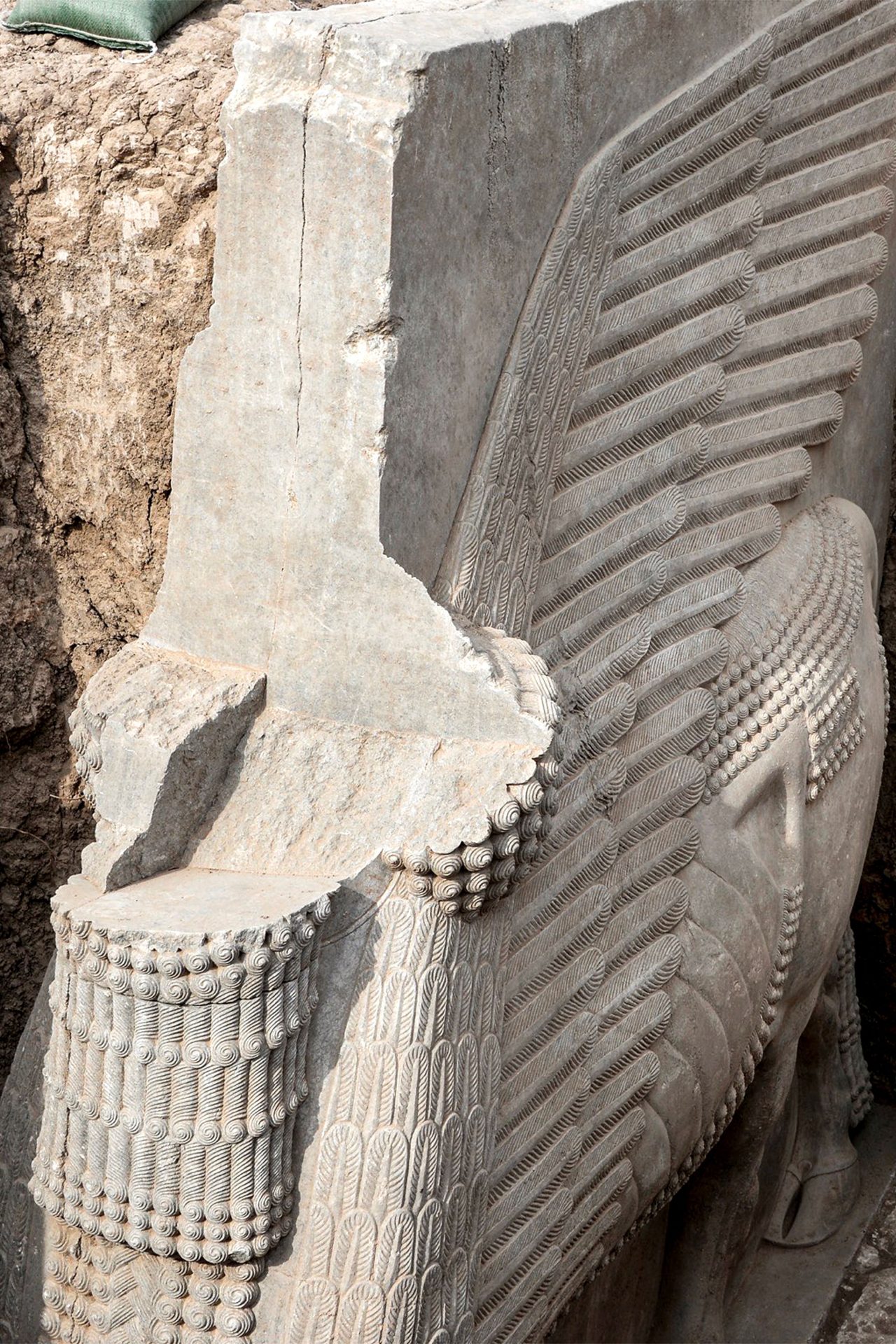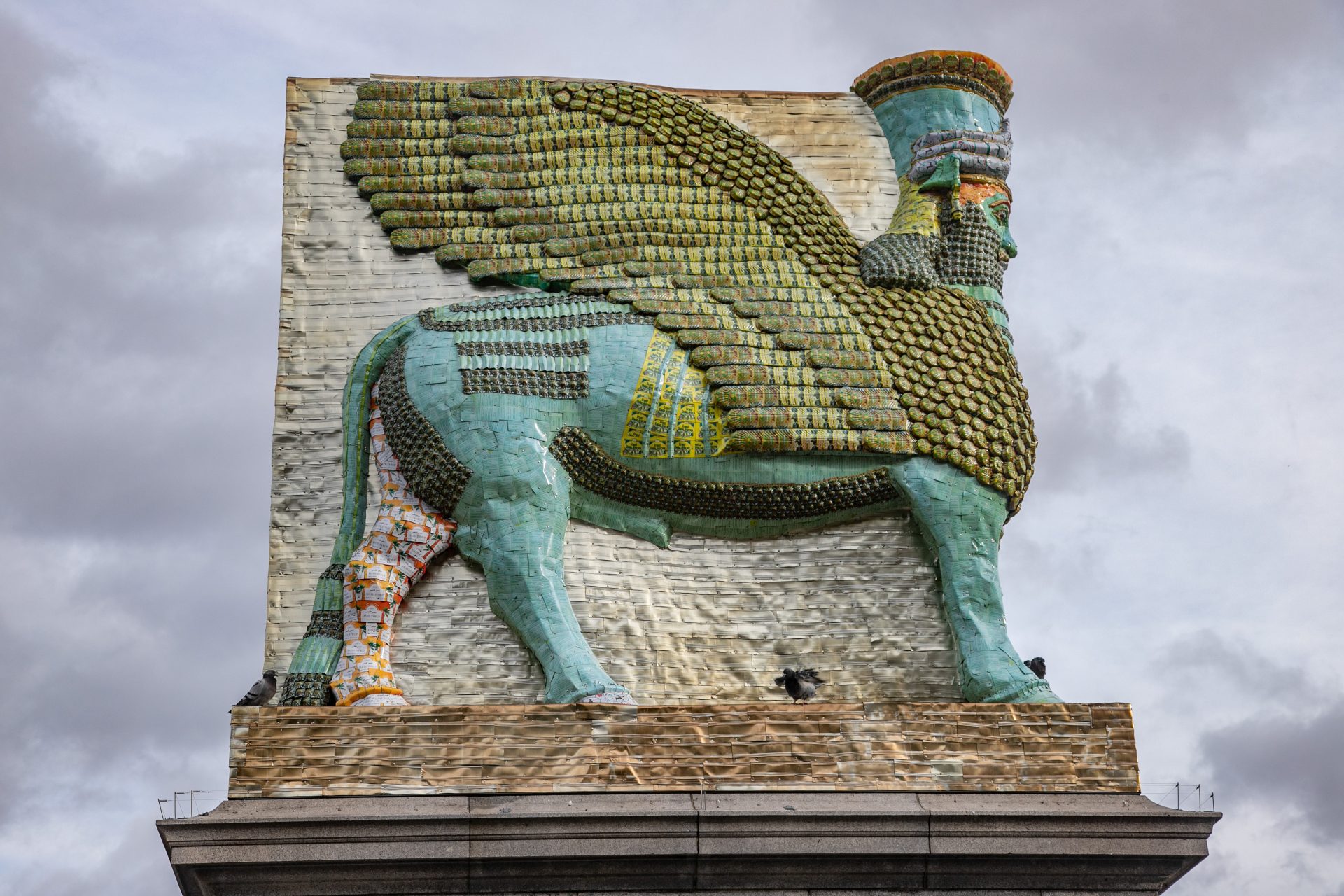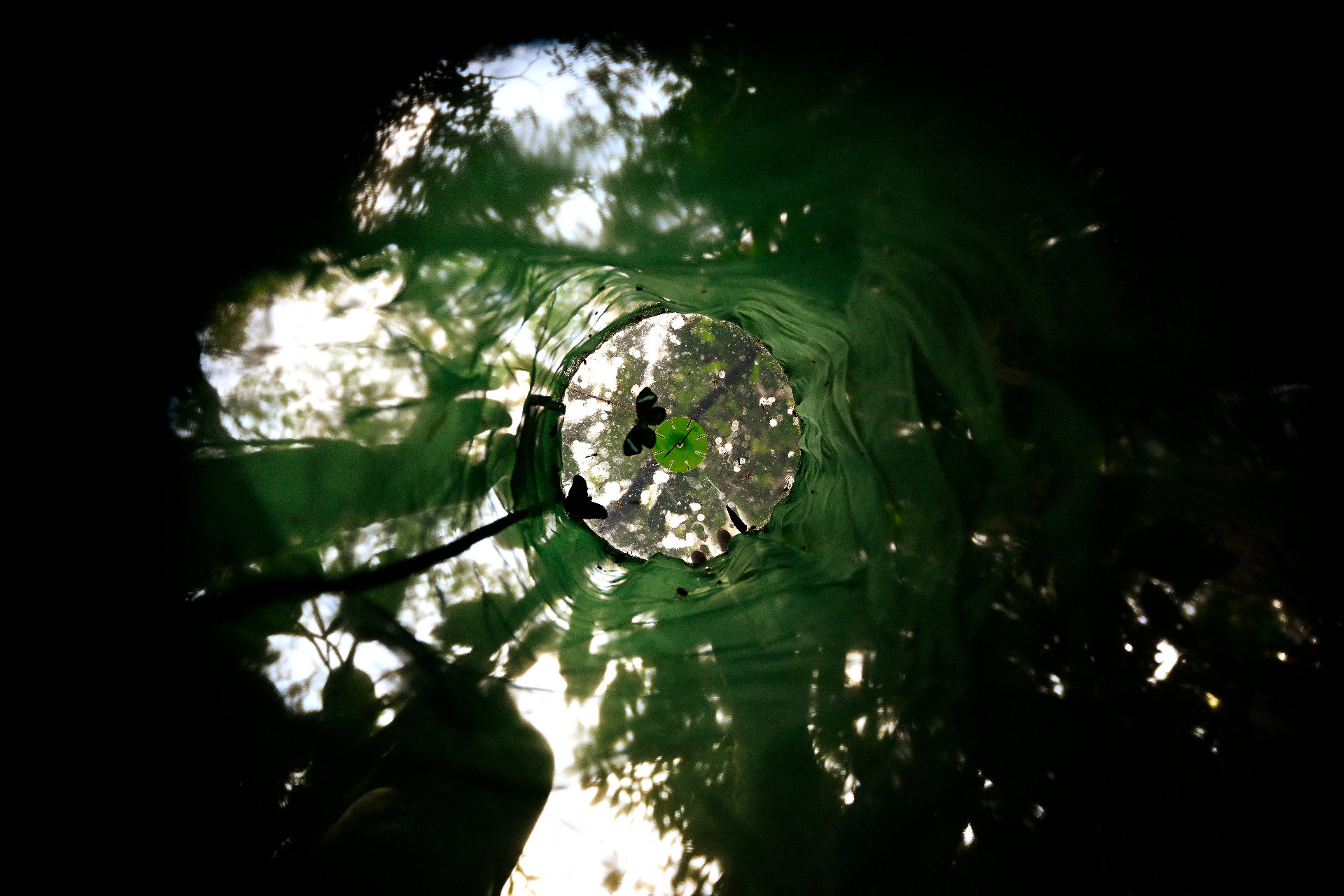Theft, conflict, and controversy: this is the weird story of a long lost ancient statue
In October 2023, archeologists finally unearthed a long-lost statue that the history had known about for a century but that had a very complicated past. This is how a giant 2,700 year old Lamassu statue was finally reunited with its head.
The giant statue of the Assyrian deity Lamassu is an imposing figure that is over twelve feet tall and weighs over eighteen tons according to Smithsonian Magazine, But this grand statue spent much of its life hiding under Iraq’s sand.
Unearthed in the ancient Northern Iraqi city of Dur-Sharrukin, this rather gigantic statue has a history as interesting as the god it depicts. But we'll get into the statue’s more recent past after a look at how and why it was made.
The statue of Lamassu is 2,700 years old according to Agence France-Presse, and it was erected at the entrance of the Assyrian city of Khorsabad, the ruins of which lay roughly fifteen miles north of today’s modern Iraqi city of Mosul.
The sculpture depicts a human head that has the body of a bull and the wings of a bird; it was commissioned during the reign of Assyria’s Sargon II, who ruled the empire from 722 to 705 BC as its king.
"I never unearthed anything this big in my life before," noted Paris Sorbonne University archeology professor, and the leader of the group that excavated the enormous statue, Pascal Butterlin.
Photo Credit: LinkedIn @pascal-butterlin
"Normally, it's only in Egypt or Cambodia that you find pieces this big,” Butterlin went on to exclaim, adding that the attention to detail on the statue was “unbelievable.”
So why did archaeologists wait so long to dig up this ancient treasure? Well, the answer might surprise you. Archeologists couldn't excavate the 2,700-year-old Lamassu statue for a couple of very important reasons. Let's look at the statue's weird history.
The statue had been written about in records dating back to the nineteenth century. But it had been lost or forgotten until it was rediscovered in the early 1990s.
However, in 1995, antique smugglers cut off the head of the statue and tried to take it out of the country according to The Art News, which wrote that a plaque near the head today explained that it was broken in eleven pieces.
“They were trying to smuggle the pieces into Turkey on the black market but they were captured,” museum guide Lio Ibrahim told The Art News, and Ibrahim went on to say that the punishment for this crime was execution.
The head was then placed in the National Iraq Museum in Baghdad according to the online art magazine Hyperallergic, but the later 2003 invasion of Iraq by the United States saw looters ransack the museum.
Photo Credit: Wiki Commons By Osama Shukir Muhammed Amin FRCP(Glasg) - Own work
The statue’s head would survive the looting of the museum but it would eventually face an even more menacing threat to its existence along with the Lamassu statue from which it was removed in 1995.
Iraq's post-war government was in no position to dig up the ancient Lamassu statue, and as stability in the region worsened, the statue—and its head—were put at risk by the Islamic State of Iraq and Syria (ISIS).
Authorities reburied the statue according to Smithsonian Magazine in order to protect it from looters and attacks, while locals in the area helped protect the ancient treasure from being destroyed in 2014, hiding the statue's location before they fled the region.
The statue stayed hidden until Pascal Butterlin and his team of French and Iraqi archeologists began work on excavating the ancient alabaster work. They now hope to reunite the Assyrian god with its head in the near future.
“It was a multidimensional archaeology,” Butterlin told Hyperallergic about the recent excavation of the statue. “It’s the archaeology of conflicts and urban archaeology, and the Lamassu is just at the border of both—with multiple lives.”
More for you
Top Stories



